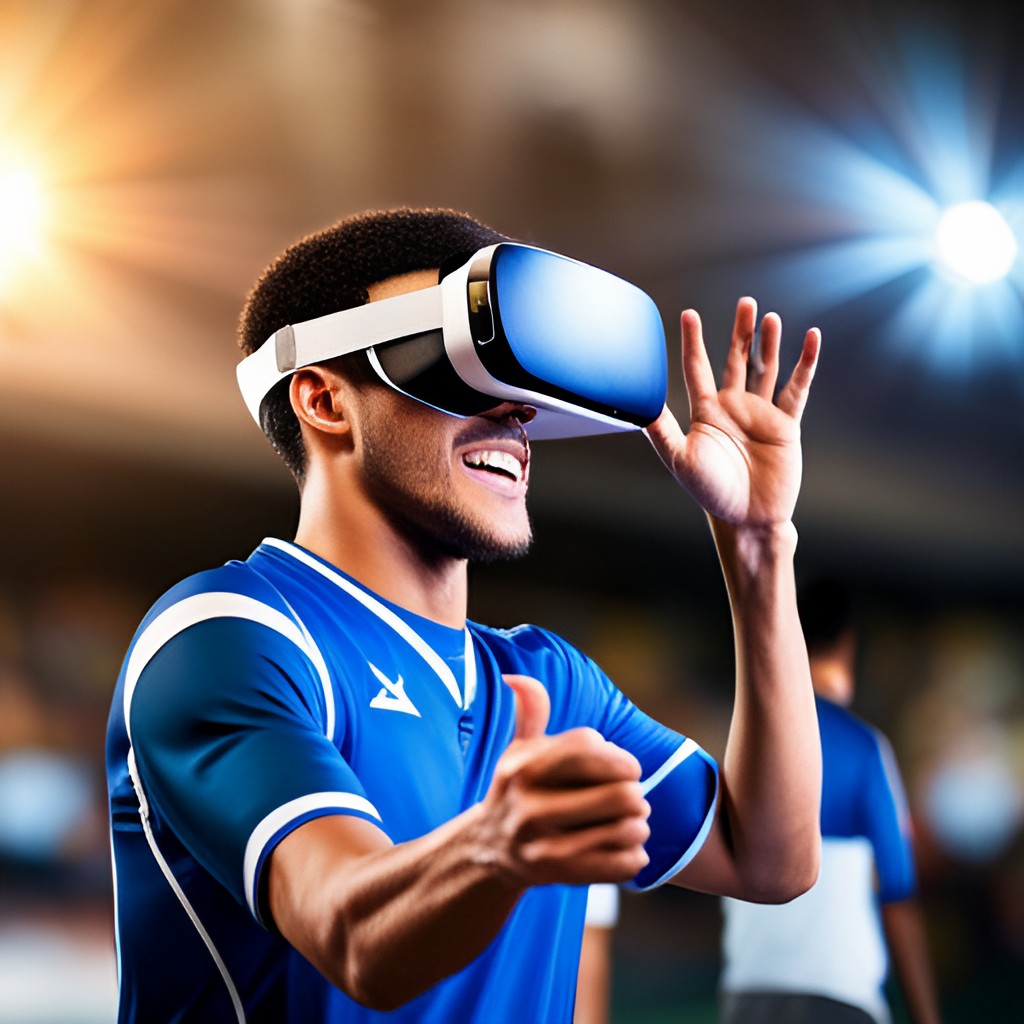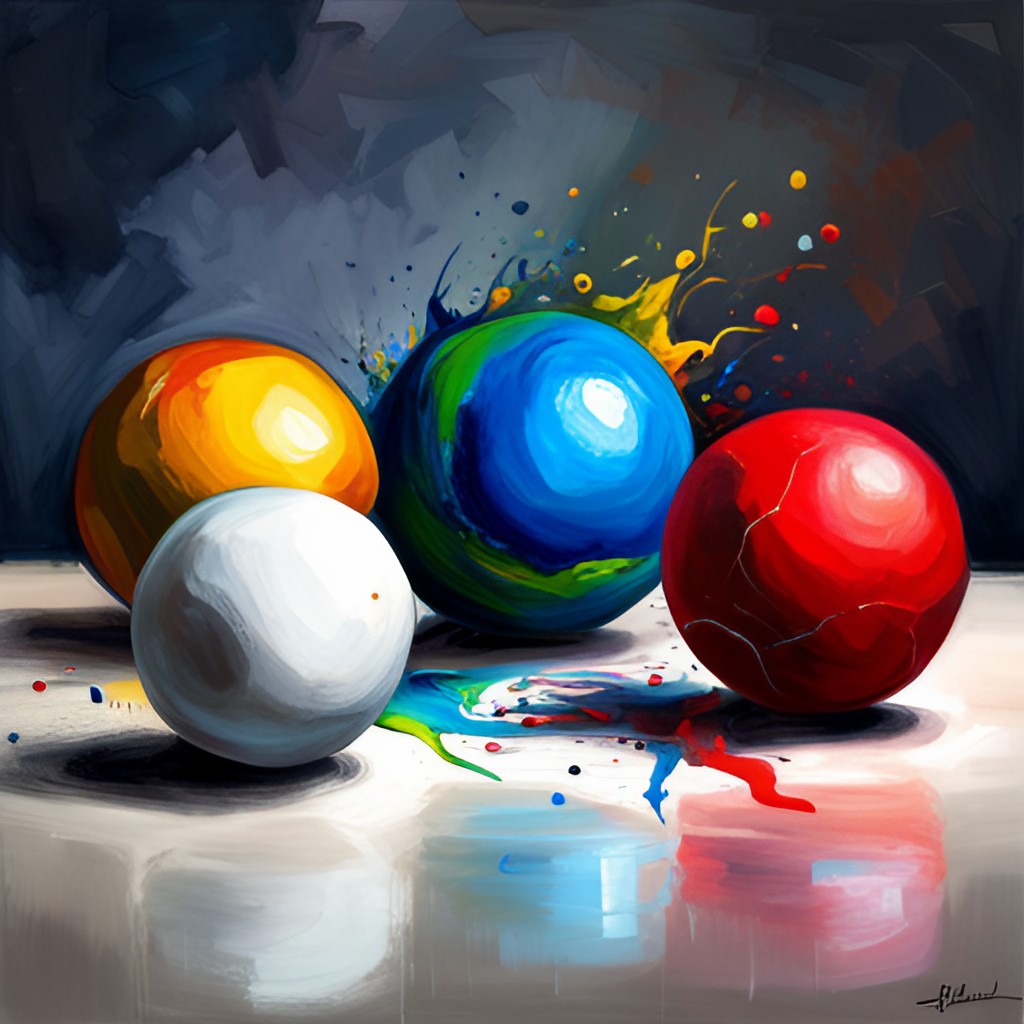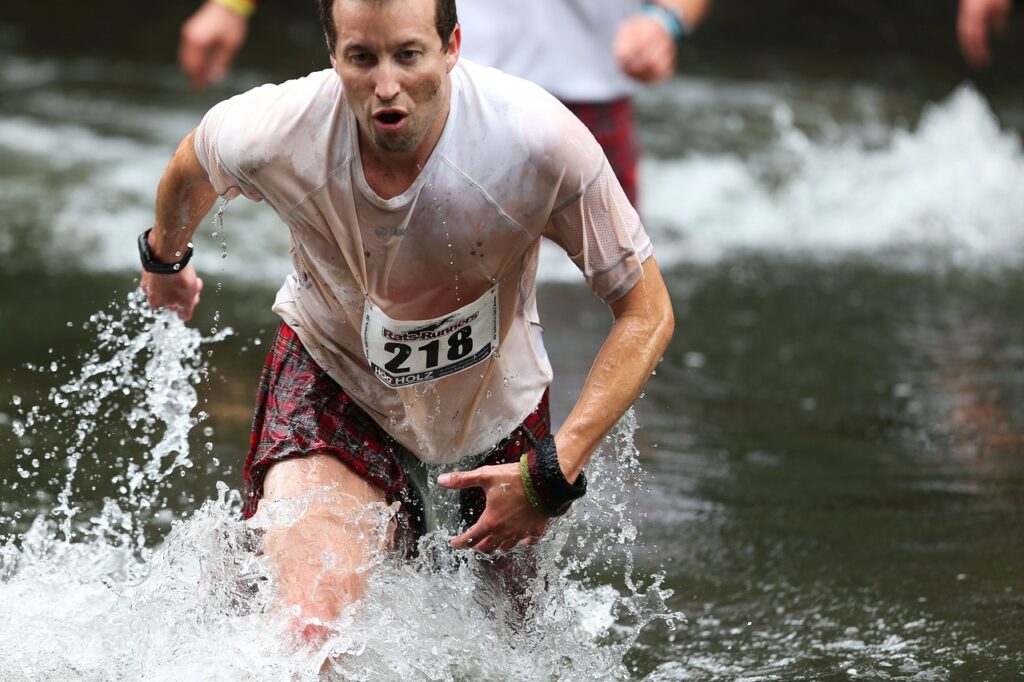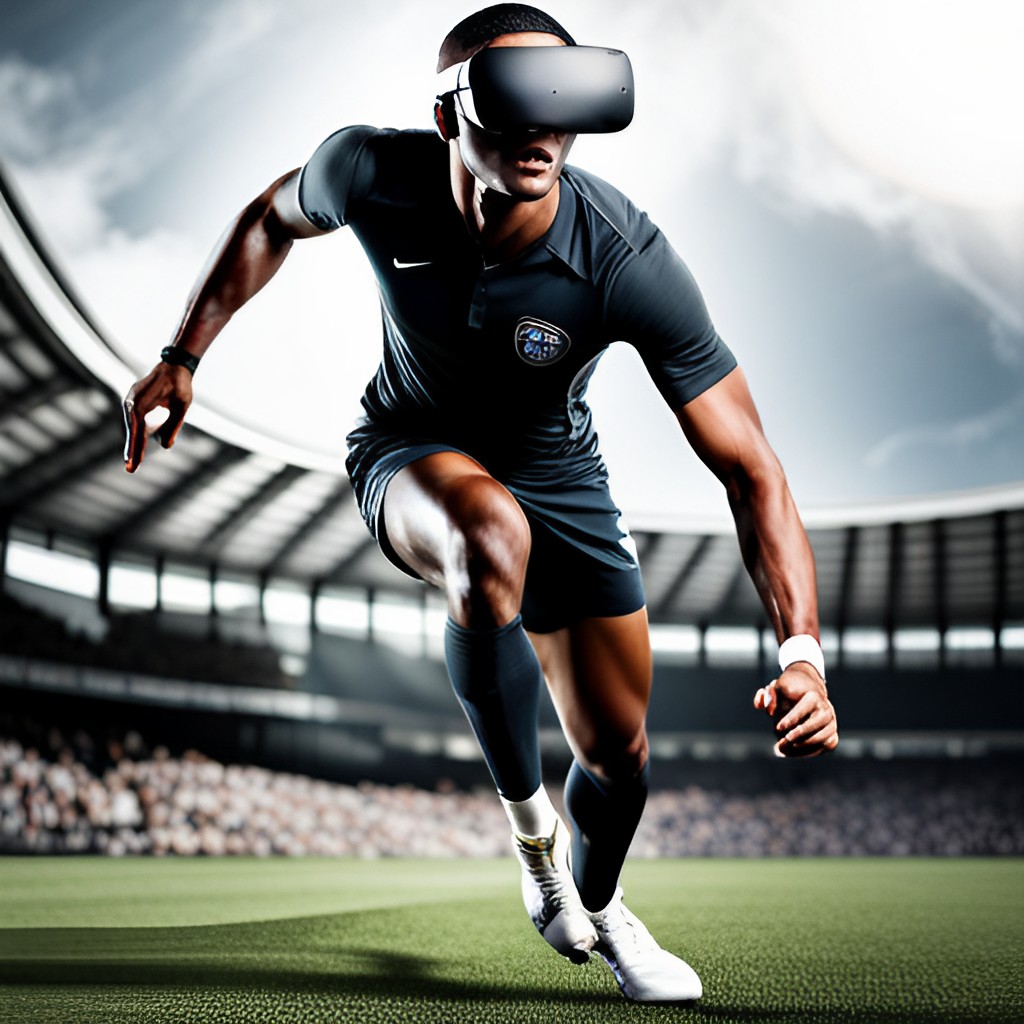Get yours right here:https://amzn.to/3UbEASQ
(We are an Amazon Affiliate)
Unleashing the Game Changer: The Role of Virtual Reality in Revolutionizing Sports Training

A Virtual Journey Through Time: VR’s Inception in the World of Sports
In the halcyon days of virtual reality (VR), the mere concept of immersing oneself in a simulated environment was the realm of science fiction dreams. Yet, as technology advanced and VR took its baby steps, the sports industry was quick to recognize the potential that lay therein.
The Birth of an Idea
In the 1980s, when VR was largely confined to academic and military research, a few pioneering sports scientists toyed with the idea of how VR could transform athlete development. Their dreams were laced with visions of creating an environment where sports stars could hone their skills with a level of precision and customization previously inconceivable.
Early Adopters and Experiments
Early sports applications of VR were rudimentary, with simple simulators that paled in comparison to the immersive experiences we have today. However, even these humble beginnings hinted at a future where the lines between virtual and real could blur, particularly in the realm of sports training.
From Concept to Reality
Jump to today, and VR’s role in sports training is not just a concept—it’s a burgeoning field replete with commercial applications and startling success stories. The technology that began with golf simulators and basketball drills has evolved into a potent catalyst for honing the skills and strategizing of athletes across various disciplines.

Hitting Home Runs in the Digital Diamond: VR’s Applications in Baseball
There are few sports as intricately tied to statistics and analysis as baseball. In the MLB, the adoption of VR technology is transforming how players see and approach the game.
The Maddenification of Baseball Training
The famed—almost mythical—Madden-inspired VR technology allows baseball players to experience and anticipate pitches in a controlled environment. Batters can fine-tune their batting based on accurate simulations of professional pitchers, improving their reaction times and overall performance.
GET IT HERE:https://amzn.to/3UbEASQ
Bullpen Innovation
Pitching effectively is not just about arm speed or power—it’s about precision, control, and strategy. With VR, pitchers now have an additional tool in their arsenal. By simulating game situations, pitchers can work on their delivery, honing their ability to hit the strike zone with accuracy and consistency.
The Evolution of Talent Scouting
Scouting, once reliant on the keen eyes of seasoned professionals, is now augmented by VR. Teams can project the potential performance of recruits, factoring in their skills, training efforts, and response to pressure situations. This predictive edge in talent scouting gives sports franchises a strategic upper hand.

A Hole-in-One for Training and Beyond: Golf’s VR Revolution
The solitary quest for that perfect swing is a timeless pursuit in the tranquil echelons of golf. VR technology is rewriting the rulebook on golf training, offering more than just a simulated field—it’s a transformation in itself.
Mastering the Swing with VR
The mechanics of a golfer’s swing are templed by precision and consistency. VR simulations of golf courses provide an environment where players can practice their swing without the constraints of real-world limitations. Be it adapting to new terrains or experimenting with different clubs, VR empowers golfers to refine their techniques methodically.
The Green Reading Challenge
Reading the green is an art steeped in estimation and experience. VR systems that detail topographical features of golf courses assist players in simulating putts and predict the trajectories, speed, and breaks with accuracy. It’s a tool that transcends regular practice, offering insights that can meticulously be applied on the field.
The Accessibility Meter
Golf’s inherent need for vast, lush green expanses limits accessibility. However, VR in golf training breaks this barrier. With a headset and a sensor, players can be transported to impressive courses from around the world, broadening not just their skills, but their horizons.

The Center Court: VR’s Ace in Tennis Training
Tennis, with its blend of power, precision, and endurance, is one of the most physically and mentally demanding sports. VR training methods are serving aces in transforming how players prepare for their tournaments.
Fine-tuning the Serve
The serve is often the spearhead of a tennis player’s offensive strategy. VR’s precision in mimicking the serve returns players the precise data on their serves—speed, placement, and spin. By testing and tweaking different techniques in this virtual realm, players can come closer to their peak performance on the court.
Return Training
The margin for error in returning a serve can be wafer-thin. VR’s simulated serves from professional players help others, sharpen their reflexes and analyze the complex speed variations, imparting a nuanced understanding that is invaluable on match day.
Future Match-ups and Simulation
VR’s realm extends beyond training—it also simulates live match scenarios. Players can experience various opponents’ tactics and court conditions, preparing them for any uncertain factors that the unpredictability of a live match might bring.







VR’s SCORE in Basketball and Beyond
Basketball is a sport that blends athleticism with strategy. VR’s simulations of courts and interactive programs bring a level of dynamism and precision to training that is unparalleled.
The Game on the Line
In high-pressure situations, the ability to sink free throws is as much about muscle memory as it is about nerves of steel. VR in basketball training allows players to simulate these crunch situations repeatedly, gradually building confidence and accuracy in their shots.
The Tactical Arena
In basketball, understanding one’s position and being able to predict moves is crucial. VR simulations of game scenarios enable players to practice defensive and offensive drills, enhancing their strategic understanding and teamwork dynamics even when the team is not physically together.
The Height of Skill Development
In a sport that prizes verticality, VR training that focuses on jump mechanics and power development is a game-changer. Through customized programs, athletes can augment their physical training with VR, ensuring that when it’s game time, they can jump to their maximum potential, quite literally.




The Rink of Innovation: VR’s Role in Ice Hockey Training
Ice hockey’s frenetic pace and precise maneuvering demand a unique approach to training, and VR is carving its path in the ice with tailored applications.
Skating on Digital Ice
The simulated ice rinks in VR are more than just an imitation—they are training grounds that can aid in the refinement of skating techniques, including acceleration, de-acceleration, and changing direction. These digital platforms allow athletes to practice intensively without the constraints of real-time schedules or space.
Precision and Decision Making
In a game where every move matters, VR’s decision-making simulations place the players in scenarios where they must react and execute plays in sync with their teammates, fostering a level of synchronicity that can be hard to replicate consistently during regular practices.
Mental Preparation and Reaction Time
The mental fortitude required to face off against an oncoming puck or to make split-second decisions in a shifting game is the unspoken armor of an ice hockey player. VR scenarios designed to induce stress and pressure help in internalizing these moments, preparing players for game intensity.
The Marathon Continues: VR’s Running Start in Athletics Training
The repetitive pursuit of perfection in running, be it long distance or sprints, is a mental and physical challenge that VR is adept at transforming into a stimulating and optimized training experience.

Long Distance Mentality
Running is as much about pacing and mental endurance as it is about muscular capability. VR applications for long-distance running simulate terrains and weather conditions that are not feasible for regular practice, which helps in the mental bracketing for competition situations, from desert marathons to highland trails.
Sprint Tactics and Technique
The split-second nature of sprints demands not just power, but also nuanced techniques. VR in sprint training provides a controlled environment to analyze and improve stride patterns, start mechanisms, and accelerate intervals with real-time feedback that is both comprehensive and immediate.
Injury Mitigation and Recovery
The toll on the body from intense and repetitive training can be mitigated through VR programs designed to complement physical training. By offering alternative running parameters, athletes can engage in effective cross-training and restorative practices in a controlled setting, contributing to enhanced performance and reduced injury risks.
VR’s Infiltration in Team Sports’ Training Camp
Team sports embody the essence of coordinated effort and synergy. VR in team sports training is a catalyst that dissolves the boundaries of individual practice, setting the stage for a team’s collective development.
Tactical Harmony
VR allows team members to practice tactical scenarios as a unit, fostering an environment where the team’s understanding of one another’s movements is as seamless as their execution on the field.
Dynamic Decision Making
Dynamic VR simulations enable players to adapt to real-time changes in game scenarios, enhancing their ability to read and react to the ebb and flow of a live competition.
Cohesive Strategy Building
VR does not just simulate scenarios; it enables teams to collectively strategize and fine-tune their plays, ensuring that every member is not only aware of their role, but also aligned with the broader game plan.
For the Love of the Game: VR’s Impact on Athlete Mental and Physical Wellness
GET IT HERE:https://amzn.to/3UbEASQ
The world of sports extends beyond the act of playing—it is a holistic engagement of an athlete’s body, mind, and soul. The role of VR in training is not just in skill sharpening; it’s also in nurturing the athlete’s overall health and well-being.
Mental Training and Resilience
Mental exercises and simulations in VR are tailor-made to prepare athletes for the psychological rigors of high-stakes competitions. From stress management to mental endurance, VR provides a controlled platform to enhance an athlete’s mental game.
Recovery and Restorative Practices
Injury rehabilitation and physical therapy in a VR environment are dynamic and effective. The controlled setting allows for meticulous exercises designed for recovery, ensuring that the athlete’s physical wellness is paramount.
Nutritional and Lifestyle Counseling
VR programs that incorporate informative narratives and engaging simulations serve as tools for athletes to understand and engage in healthier nutritional and lifestyle choices, further enriching their training experience.












VR and the Victor’s Cup: Success Stories in Sports Training
The sporting world is replete with tales of athletes who have reaped the rewards of VR training, turning potential into podium finishes and aspirations into actualities.
The VR Turnaround in Performance
From individual players to entire teams, the infusion of VR into training dynamics catalyzed remarkable improvements in performance. Whether it was Ironman athletes breaking their personal records or basketball teams clinching championships, the evidence of VR’s efficacy is written in the annals of sports history.
The Cultural Shift in Sports Training
The adoption of VR in sports training is not just a technological evolution, but also a cultural one. It signifies a shift in how athletes and coaches perceive training methodologies and leverage technological advancements for sustained excellence.
The Economic Impacts of VR in Sports
The success stories in sports training are not just inspiring narratives; they also reflect the economic impacts of VR technology. By optimizing training, VR minimizes the risks of injuries and maximizes the efficiency of practice, resulting in long-term benefits for athletes, teams, and the sports industry at large.
The Unseen Horizon of VR in Sports Training
The present is teeming with the triumphs of VR in sports training, but the future is where the real adventure lies. The nascent developments in VR technology promise further innovations and refinements that will redefine the very essence of how athletes prepare and perform.
The Promise of Wearable VR Tech
Wearable VR technology—lightweight headsets equipped with sophisticated sensors and intelligent fabrics—is the next frontier in sports training. It marks a shift from the conventional, establishing a new normal where training is personalized, mobile, and microsurgically precise.
The Intersection of VR and AI
The interplay of VR and artificial intelligence (AI) is a symbiotic one that will unlock dynamic simulations and personalized training modules with an unparalleled level of intelligence. VR environments sculpted by AI will be responsive, adaptive, and capable of understanding and catering to an athlete’s evolving needs.
The Rise of Multi-Modal VR Environments
Future VR environments in sports training will not be restricted to visual and auditory simulacra. Multi-modal VR will engage all the senses—touch, taste, and smell, creating experiences that are not just immersive, but complete.
In conclusion, VR in sports training is no longer a futuristic fantasy; it is an unfolding chapter in the timeless saga of human endeavor. The essence of sports will always remain the same—grit, passion, and the relentless pursuit of excellence. VR technology is poised to amplify these elements, enriching the tapestry of sports training and ensuring that athletes are not just participants in the game, but architects of their success.
Set your sights on the VR horizon and get ready to elevate your game to unprecedented heights. The sports world awaits, and the VR revolution is just getting started.
